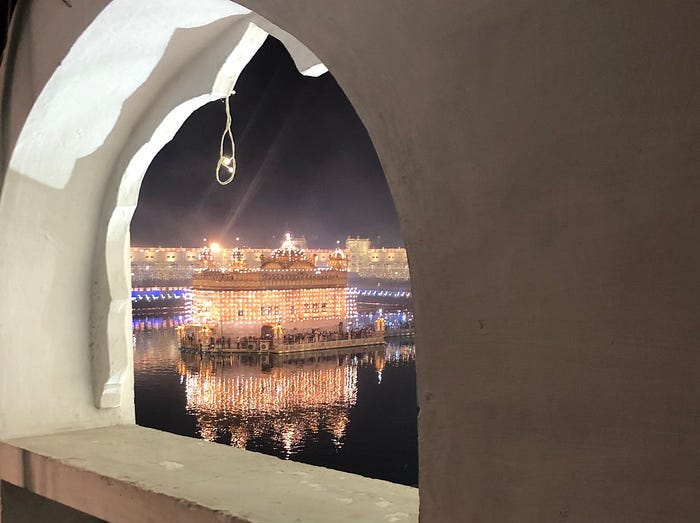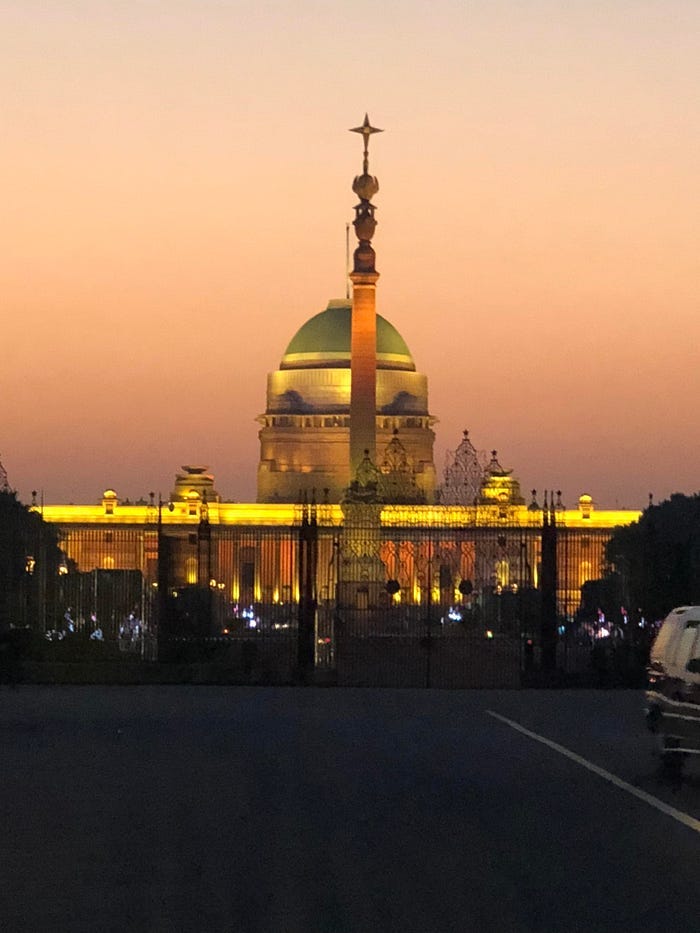Interwoven Histories: The Sikh, Indian, and Western Experience
Enduring Faith, Resilient Community: Tracing the Evolution of Sikh History, Interwoven with Indian and Western Histories, and its Impact on the Cultural, Religious, and Political Landscape of India
Sikh Community
The Sikh community has a rich and diverse cultural, religious, and political history that spans centuries. It is a community that has faced numerous challenges, yet has always remained resilient, adaptable, and steadfast in its faith and beliefs. Sikhism emerged in a historical context that was marked by significant political and social upheaval, religious conflict, and cultural transformation. Understanding this context is essential to appreciating the significance of Sikh history and its contributions to the broader tapestry of world history.
History of Sikhs — is it as remote as we think?
However, the events of Sikh history can often seem distant and remote in time, especially when compared to the corresponding events in Indian and Western history. This can make it challenging to understand the complexities and nuances of Sikh history and appreciate its significance in a broader context. Therefore, the objective of this essay is to create a comprehensive chronology of significant events in Sikh history, interspersed with Indian and Western history, to provide a better understanding of the historical context in which Sikhism emerged and how it has evolved over time.
Sikh history begins with the birth of Guru Nanak Dev Ji in 1469, who is revered as the Founder of the Sikh faith. Guru Nanak Dev Ji spent his life traveling and spreading the message of Sikhism, which emphasizes the importance of devotion to God, social justice, and equality. He was succeeded by nine more Gurus, each of whom contributed to the development and evolution of Sikhism, adding new dimensions to the faith and its teachings. Now, Sri Guru Granth Sahib is an embodiment of the living Guru for millions of Sikhs across the globe.
Contemporary Indian history
At the same time, India as well as the western world was undergoing significant political and social changes. The Mughal Empire, which had dominated much of northern India since the early 16th century, was in a state of decline. The empire’s internal divisions, coupled with external threats from other regional powers, weakened its hold on power. This led to the emergence of regional states and the rise of new powers, such as the Maratha Empire, which challenged the Mughals’ hegemony.
Developments in the western world
In the Western world, the period from the late 15th century to the early 19th century was marked by significant exploration, colonization, and globalization. European powers, such as England, Spain, Portugal, and France, established vast empires across the globe, with the Americas, Africa, and Asia being the primary targets of their expansionist ambitions. The Age of Enlightenment, which emerged in the 17th and 18th centuries, brought new ideas about reason, science, and individual rights, leading to significant political and social changes in Europe and the Americas.
Creating a comparative chronological framework
Returning to Sikh history, the period from the mid-18th century to the mid-19th century was marked by significant political upheaval and conflict. The Sikh Empire, which had emerged in the early 19th century, was challenged by the British East India Company, which had established its dominance over much of India. The two powers clashed in a series of wars, culminating in the annexation of the Sikh Empire by the British in 1849.
Interleaving and inter-weaving the dates of the ascension of the Mughal Emperors and the Guru Gaddi of the Sikh Gurus into the chronology further highlights the intersecting trajectories of these different streams of history. It allows us to appreciate the ways in which these events were interconnected and how they influenced and shaped one another. By understanding the broader historical context in which Sikh history emerged and evolved, we can gain a deeper appreciation of its significance and contributions to world history.
Semi-comprehensive list of events
The following is a semi-comprehensive list that includes the significant events in Sikh history, Indian history, and Western world history:
1469: Guru Nanak Dev Ji, the founder of Sikhism, is born in present-day Pakistan.
1526: Babur, the founder of the Mughal Empire, defeats the Sultan of Delhi in the Battle of Panipat.
1539: Guru Nanak Dev Ji appoints Guru Angad Dev Ji as the next Sikh Guru, marking the beginning of the succession of ten Sikh Gurus.
1556: Akbar becomes the Mughal Emperor at the age of 13, ushering in a period of cultural and religious tolerance in India.
1606: Guru Hargobind Ji, the sixth Sikh Guru, is confined in the Fort of Gwalior by Emperor Jahangir.
1627: Shah Jahan becomes the Mughal Emperor and commissions the construction of the Taj Mahal.
1675: Guru Tegh Bahadur Ji, the ninth Sikh Guru, is executed by Emperor Aurangzeb for refusing to convert to Islam.
1699: Guru Gobind Singh Ji, creates the Khalsa Panth at Anandpur Sahib, on the occasion of Baisakhi.
1708: Guru Gobind Singh Ji, the tenth and final Sikh Guru, passes away, and the Guru Granth Sahib becomes the eternal Guru of the Sikhs.
1739: The Mughal Empire suffers a major defeat at the hands of the Persian ruler Nadir Shah, leading to the decline of the Mughal Empire.
1765: The British East India Company establishes control over Bengal, marking the beginning of British colonial rule in India.
1801: The Sikh Empire is founded by Maharaja Ranjit Singh, who establishes Lahore as his capital.
1839: The First Anglo-Afghan War begins, with British forces invading Afghanistan.
1849: The British East India Company annexes the Sikh Empire following the Second Anglo-Sikh War.
1857: The First Indian War of Independence against British rule takes place, with Indian soldiers and civilians rising up against their British oppressors.
1876: Queen Victoria is proclaimed Empress of India, marking the height of British colonial power in India.
1919: The Jallianwala Bagh massacre takes place in Amritsar, Punjab, where British troops open fire on peaceful protesters, killing hundreds.
1947: India gains independence from British colonial rule and is partitioned into India and Pakistan. The partition leads to widespread violence and displacement, particularly among the Sikh and Muslim populations.
1966: Punjabi-speaking, Sikh-majority state of Punjab created, after the prolonged Punjabi Suba agitation, within the Union of India.
1984 (June): The Indian Army storms the Golden Temple in Amritsar to remove Sikh separatist militants who had taken refuge there, leading to the deaths of many innocent Sikh pilgrims.
1984 (October, 31): Assassination of Indira Gandhi by her Sikh bodyguards on 31st October, 1984 and the subsequent anti-Sikh riots in Delhi and other cities like Kanpur in India.
1991: The Indian government announces economic reforms, liberalizing the country’s economy and reducing government control.
2001: The September 11 attacks take place in the United States, leading to the War on Terror.
2004: Sardar Manmohan Singh becomes India’s first Sikh Prime Minister and remains one till 2014, winning the 2009 General Election.
2014: Narendra Modi becomes the Prime Minister of India.
2020: The COVID-19 pandemic spreads globally, causing widespread illness, death, and economic disruption.
Conclusion
In conclusion, the chronology of significant events in Sikh history, interspersed with Indian and Western history, reveals the remarkable resilience and adaptability of the Sikh community. Despite facing numerous challenges and upheavals throughout its history, the Sikh faith and its people have remained steadfast in their devotion to God, social justice, and equality. The Sikh community’s unshakeable faith in the Union of India and its commitment to preserving and promoting the principles of secularism, democracy, and pluralism are a testament to its enduring strength and resilience.
Moreover, the Sikh diaspora, spread across the world, has played a significant role in promoting Sikhism and its values and contributing to the societies in which they live. Their success and achievements in various fields, including business, education, politics, and culture, are a source of inspiration for future generations of Sikhs and a testament to the community’s ability to adapt and thrive in diverse environments.
Although there have been stray voices calling for a separate Khalistan, most of which are emanating from abroad, the overwhelming majority of Sikhs remain committed to the principles of the Indian constitution and the Union of India. They are an integral part of India’s rich cultural, religious, and political tapestry and have contributed immensely to the country’s development and progress.
Looking forward to a bright future
Therefore, we can confidently say that the Sikh community, with its rich history, diverse culture, and steadfast faith, has a bright and promising future ahead. It will continue to play a significant role in shaping the cultural and social landscape of India and the world, inspiring generations to come with its message of devotion, justice, and equality.






